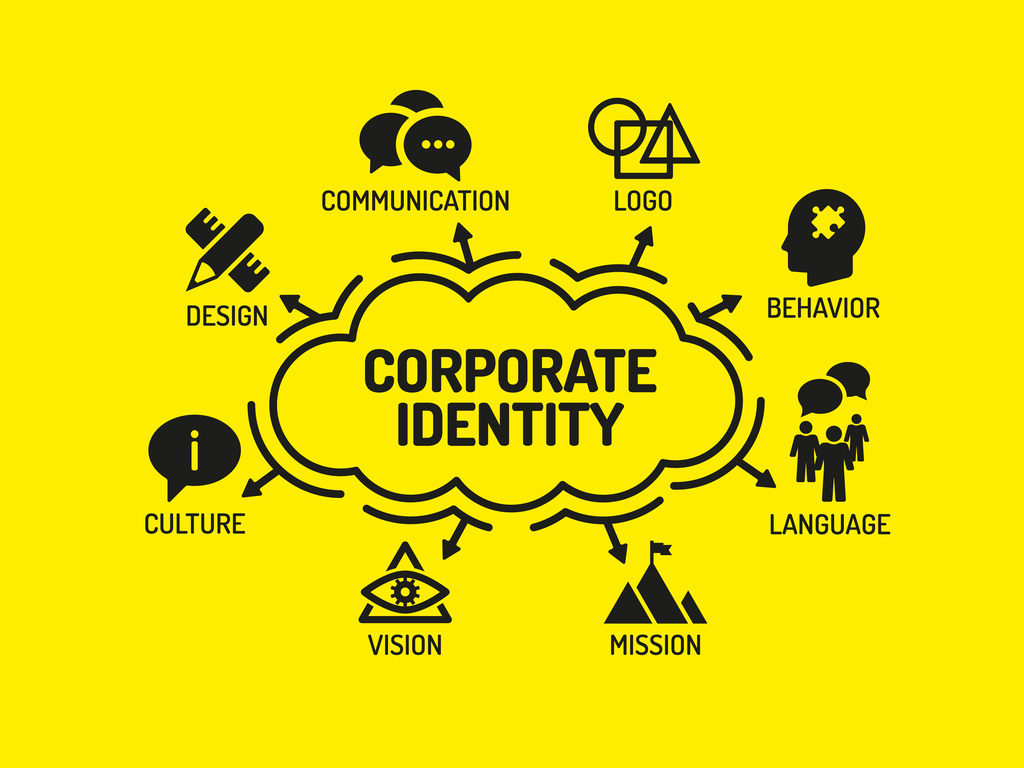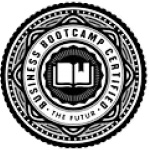What do you perceive when you see the biggest companies across the world, like Apple, Etihad, Emaar Group, or Microsoft? Usually, the first word that comes is “brand”. Well, you are absolutely right. They are the epitome of marketing success and, over the years, have created an inspiring brand identity. Their consumer base is so strong and loyal that even the best or better alternative fails to break the connection. It is the outcome of years of consistency and positive communication with audiences through assorted channels that have cultivated a sense of trustworthiness.

Importantly, an inspiring brand personality is a keystone for their success that safeguards the brand image and continuously guides businesses to accomplish their purpose. So, in simple language, the brand identity is a comprehensive blend of branding elements that offers a resourceful outward expression of the brand. Let’s comprehend the its meaning and process of creating one:
What is Brand Identity?
Brand identity is the credible reflection of the company portraying the brand’s values, propositions, mission, and promise to all intended stakeholders, assuring them to offer great service. It also provides a unique perspective of your business in the audience’s eyes and helps in perceiving diverse characteristics distinct from your competitors. Importantly, brand individuality creates a path of trust, loyalty, and reliability with your consumers. It is the most valuable investment you can make in your esteemed business.
A powerful brand identity influences audiences and creates a positive image in the market. It is also easily recognisable and conveys the business message in the simplest form. So, let’s check out some importance of a robust brand identity:
- Creates an influential perception about the business in the mainstream.
- Enhances brand recognition and develops a sense of loyalty in the heart of customers.
- Provides a resourceful channel for an immersive experience and effective communication with the audience.
- Helps in differentiating from other players and amplifies your brand presence in the market.
- Develops a special brand personality and gives a recognisable impression to your business.
Steps to a Build Successful Brand Identity
STEP 1: Know Your Business
Before swimming in the ocean of branding, the first step is to know your business and its associated aspects. Creating a brand identity is the same as building your home. You should know every component to set up a firm foundation that lasts for eternity. The action requires extensive research and effective marketing decisions. Here are a few vital things that need to evaluate:
- Who Are You?: If you want to build a powerful identity, the first thing is to know yourself. Who are you, and what is the purpose? What can you offer? Why will the audience associate with your brand? These are some essentials of your brand that need to be properly communicated with the targeted audience. If you are too murky or ambiguous about your business ideas, you will not get the desired response from the customer. Therefore, to connect with the audience, first, you need to determine your brand’s purpose.
- Identify Your Rivals: The market is a pool of opportunities, and there are countless brands contesting with each other to attract the audience. So, it is necessary to do comprehensive research about your competitors and their fundamental branding elements. Accordingly, you can create your distinct brand strategy and outshine them. The process will help curate your brand propositions and USP (Unique Selling Point), attracting a large base of consumers. Your unique propositions and offerings will cater for a positive impression in the market and thus augment your brand identity.
Step 2: Develop Your Intrinsic Brand Personality
Every brand has certain traits that create a special radiance in the market. These can be unique distinctions, cohesiveness, memorable impressions, appealing and more. Although there are no prescribed guidelines to develop an unparalleled brand persona, few branding elements can help immensely in the process. Let’s check out:
- Identifying Your Value and Mission: The leading brands are inspired by their values and vision. What are your business’s core values? Your brand’s values form the centre of your business plan; you stand for it, believe in, and represent to the audience. These values motivate and guide you to accomplish the business objectives.
Importantly, the audience associates themselves with the brand having values that align with their perspective. So, identify your core values and mission that ensure a powerful brand identity. - Comprehensive Brand Guidelines: The brand guidelines are the bedrock of the business, assisting businesses to build, amplify presence, and prosper in the mainstream. This help create a synopsis for the intended operations and assists in constructive communication with various stakeholders, including client, agency, employee, and audience. They comprise every communication component extending from logo design to tagline.
Step 3: Designing Essential Branding Elements
Visual communication is the most incredible tool to connect with the audience. It is the soul of branding and also the biggest differentiator between the special and ordinary one. Visual language cultivates emotion and conveys your brand’s purpose, characteristics, USP, and value propositions in a most imaginative and credible manner. Colours, patterns, designs and creative taglines arouse sentiments and thus entice individuals to connect with the brand. Here are the essential visual elements:
- Logo: Logo is the face of your brand and is popularly tagged as the visual trademark of the business. It is the simple and recognisable element that represents your brand essence in one go. The design of the logo is perfectly aligned with brand propositions and also incorporates some creative instincts that catch the audience attention. So, make sure your brand logo supports your business purpose, featuring eye-catching and memorable attributes.
- Topography: The design of the text also influences the audience and is an eminent component of visual branding. Topography is the textual component of the visual branding, so make sure your fonts style, subtitles, body texts, typefaces and highlighted texts are perfectly coherent with the design. The constructive alignment will offer a greater sense of prominence, enhancing attractiveness and memorability.
- Additional Impressions: Various visual components help in all-inclusive communication with business stakeholders, including illustrations, photography, iconography, data visualisation, product packaging, and more. These help in streamlining the assorted communication channels and offer holistic branding. In addition, brand websites and social media are also valuable assets that assist in interaction with the audience and magnify digital presence.
Step 4: Creative Blend of Elements For Striking Brand Identity
The final touch involves a constructive compilation and implementation of the resources to create an impressive brand identity. Importantly, consistency and creativity are great ways to keep the audience’s attention intact and expand the market’s presence. It is a continuous practice to achieve perfection and explore unhindered opportunities with the aim of offering an immersive experience to the audience.
Summing Up
Now, you have a fair idea about the creation of brand identity and how it can transform a normal business into an extraordinary one. Notably, consistency and creativity are core aspects that help preserve your brand integrity and build an incredible brand personality. So, if you want to enhance your business by creating a remarkable brand identity, then connect with VOWELS. We are a pioneer in developing a productive brand strategy and assisted hundreds of brands in having their distinct identity in the market. So, reach out to us and allow us to design your brand’s future.






